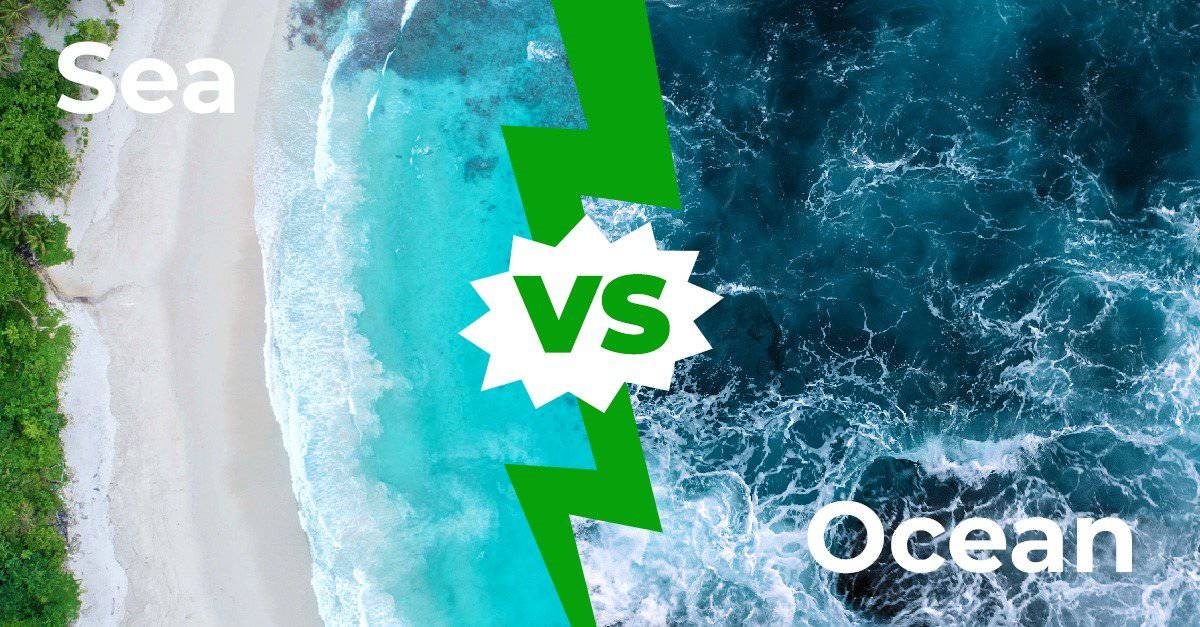Key Points
- Seas are small portions of an ocean. They are located in areas where ocean and land meet.
- Seas areas can be further broken up into multiple smaller seas that attach to separate shores
- In general, seas are partially enclosed by land as opposed to larger oceans which surround large land masses.
- An ocean can have separate seas.
In science, there is usually a technical term for everything. The somewhat nebulous definition of a sea is one of the things that makes the difference between a sea and an ocean so interesting. The terms are somewhat interchangeable in many ways. This may be because the original definition of seas and oceans predated the rediscovery of science in the Middle Ages.
When sailing ships were just beginning to cross oceans, there was no real distinction between an ocean and the sea. These antiquated nautical traditions have survived to this day. As a result, the terms sea vs. ocean are more generalized rather than highly specific. The original hazy definitions have therefore been allowed to continue into modern times and remain somewhat nebulous in their differentiation. Custom, in this case, has proven stronger than the determined scientific definition. Let us have a look at this comparison of “sea” vs “ocean.”
Comparing Sea vs Ocean
As generally understood today, all oceans are larger than seas. It is also often the case that seas are considered to be components of a larger body of water. This is frequently, but not always, an ocean to which the smaller seas belong. In the most obvious case, the Mediterranean Sea is not an ocean, yet various parts of it are also considered to be seas in their own right.
The Tyrrhenian Sea is the portion of the Mediterranean Sea that washes up against the western and northwestern coasts of Italy. Over on the other side of the Italian boot, the body of water between Italy and the Balkan peninsula is generally known as the Adriatic Sea. Further still, the part of the Mediterranean on the other side of the Balkan peninsula is known as the Aegean Sea.
Out in the wider oceans themselves, it is possible to find many seas listed as being included as a similar type of subunit in their overall oceanic domain. The South China Sea is much in the news these days. Along with the Yellow Sea and the Sea of Japan, these are all part of the great Pacific Ocean yet retain their own distinct local identity as places along the Chinese coast.
The Key Differences between Sea vs Ocean
As mentioned above, size matters in terms of the definition of seas and oceans. Yet other differences also differentiate the two. Oceans are considered to be saltwater while seas are often considered to be saline water or less salty water. This is due to the proximity of seas to the landmasses of the earth. Freshwater rivers dump their output into the seas off the coast. This dilutes the oceanic salt level to some degree.
Access also matters. The wider waters of the world are considered to be five interconnected oceans, although this traditional definition is becoming modified to some degree. Some seas, such as the Aral and Caspian Seas, are completely divorced from any connection to the oceans and are thus also able to be defined as saltwater lakes such as the Great Salt Lake in Utah.
Other seas are notable for their limited number of connections to the wider oceanic mass. The Baltic Sea, for example, only has one outlet to the wider Atlantic Ocean. The Black Sea only has one narrow outlet to the Mediterranean Sea, which in turn only has one single natural outlet to the Atlantic as well. On the other end of it, the Suez Canal offers a manmade egress to the Red Sea, which in turn only has one opening out into the Indian Ocean. In all cases, seas are noted for their proximity to land.
Bays & Gulfs vs Seas & Oceans
The different bodies of water can get quite confusing. Bays and gulfs are part of a sea or an ocean but differ in their geographic anatomy. For instance, bays formed where the land curves inward around a broad, recessed coastal inlet. Bays are typically areas where ships can find sheltered areas that break to full power of large waves.
Gulfs have a more enclosed entrance and their inlets are deeper. So, all bodies of water with different characteristics of land formations and water constitution.
All of the terminology associated with the naming conventions of large bodies of water arose from the needs of shipping. We still rely on a variety of shipping vessels to move food and goods across the world. While our ships have gotten larger and no longer rely on wind power, the nautical terms used 500 years ago are still applicable today.
Up Next…
The oceans and seas of the world are vast. Mysteries abound are out there, so find out more about what we do know about oceans:
- Discover the Largest Ocean in the World – You might think all oceans are the same size, but you would be mistaken!
- 10 Incredible Atlantic Ocean Islands – The Atlantic is home to some true paradises on Earth.
- 8 Incredible Pacific Ocean Islands – Many of us have heard of the treasures the Pacific Ocean has to hold, so let’s explore them!
Thank you for reading! Have some feedback for us? Contact the AZ Animals editorial team.








